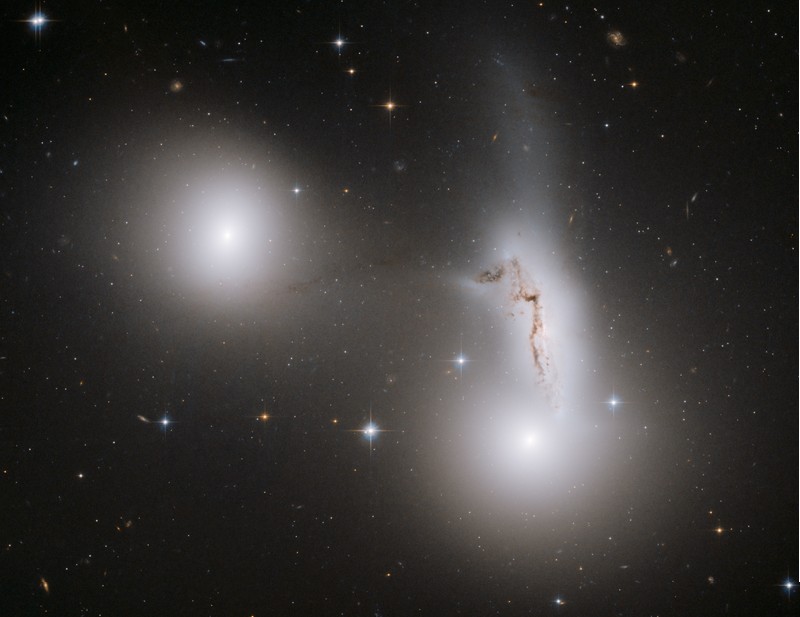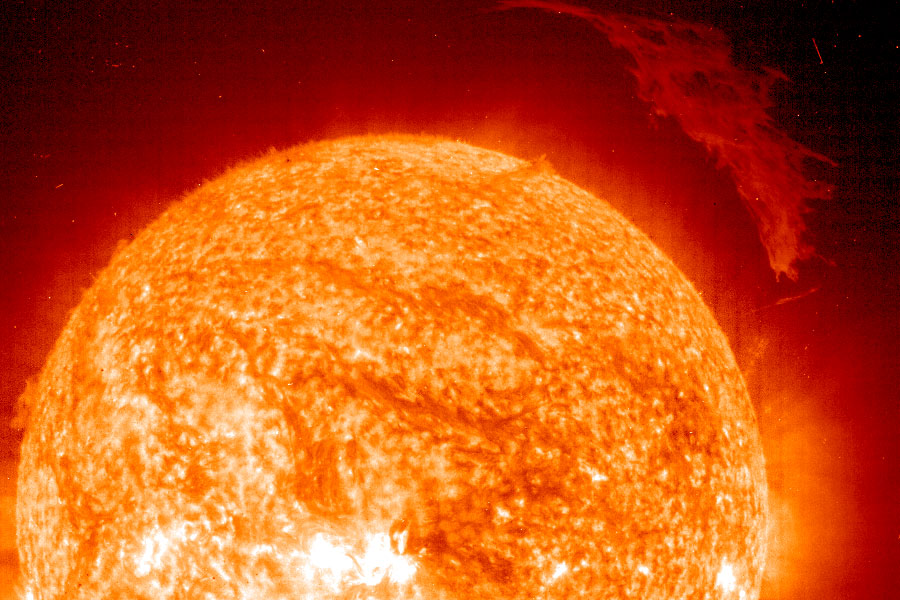Right, but the best thing we can search for are the conditions we know to be conducive to the creation of life.Borman said:I doubt it, since no one can be sure. Who the heck knows what life will actually resemble when we find it elsewhere
-
Hey Guest. Check out your NeoGAF Wrapped 2025 results here!
You are using an out of date browser. It may not display this or other websites correctly.
You should upgrade or use an alternative browser.
You should upgrade or use an alternative browser.
Space: The Final Frontier
- Thread starter Windu
- Start date
DrForester
Kills Photobucket
Turns out there was a REAL picture the eclipse from the moon.

http://blogs.discovermagazine.com/badastronomy/

http://blogs.discovermagazine.com/badastronomy/
That magnificent sight is the Sun being eclipsed by the Earth as seen from the Moon. Specifically, its taken by the Japanese probe Kaguya as it orbited our own satellite. How awesome is that? Usually, the diamond ring effect is seen in a solar eclipse, when the Moon blocks the Sun as seen from Earth. Sunlight peaks around lunar mountains and valleys, creating what looks like a wedding ring in the sky. But not this time: thats the Earths atmosphere lit up, a circle of a sunlight, a ring of a thousand simultaneous sunrises and sunsets.
Not sure if this was posted yet. I doubt I'll be able to see anything from where I am.
http://technology.sympatico.msn.ca/...line=True&subtitle=&detect=&abc=abc&date=True
Green comet to head past Earth
WASHINGTON - An odd, greenish backward-flying comet is zipping by Earth this month, as it takes its only trip toward the sun from the farthest edges of the solar system.
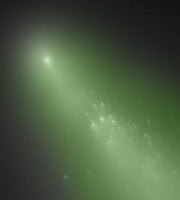
The comet is called Lulin, and there's a chance it can be seen with the naked eye - far from city lights, astronomers say. But you'll most likely need a telescope, or at least binoculars, to spot it. The best opportunity is just before dawn one-third of the way up the southern sky. It should be near Saturn and two bright stars, Spica and Regula.
On Monday at 10:43 p.m. EST, it will be 61 million kilometres from Earth, the closest it will ever get, according to Donald Yeomans, manager of NASA's Near Earth Object program.
The story behind the comet is more intriguing than its appearance - the greenish tinge may be hard for many to discern. The colour comes from a type of carbon and cyanogen, a poisonous gas.
Lulin was discovered by a Chinese teenager two years ago. It still has many of its original gases - gases that are usually stripped away as comets near the sun. Unlike most comets viewable from Earth, this one hasn't been this close to the sun before, Yeomans said.
While all the planets and most of the other objects in the solar system circle the sun counterclockwise, Lulin circles clockwise, said NASA astronomer Stephen Edberg. And thanks to an optical illusion, from Earth it appears as if the comet's tail is in the front as the comet approaches Earth and the sun.
"It essentially is going backwards through the solar system," he said.
It came from the outskirts of the solar system, 29 trillion kilometres away. Once it's made the journey around the sun, Lulin will gain enough speed to escape the solar system, Edberg said.
"If you are interested in comets, make sure you see it," he said. "But it's not going to be a real great blast for the general public."
http://technology.sympatico.msn.ca/...line=True&subtitle=&detect=&abc=abc&date=True
xBerserker
Member
Jtwo said:I hate to be a buzzkill, but I'm pretty sure that is nothing like what it would look like with the naked eye.
Look at the hill! You can see them like it's bright daylight! It's definitely taken at a long/high exposure.
I mentioned in a post below that post it was taken with a long exposure. No it's not going to look exactly like that, but I'm sure it would still look amazing.
subzero9285
Banned
Reminder of the Green Comet

SourceIt's green, about 300,000 miles wide and some 38 million miles away, and tonight a comet called Lulin could be visible to the naked eye.
At around midnight, UK space scientists and amateur stargazers will be looking due south for a glimpse of the unusual celestial body as it reaches its nearest point to Earth.
Discovered only a year ago, the comet gets its green colour from a poisonous, cyanide-like gas in its atmosphere.
It will appear close to Saturn in the sky during its first visit to the Earth's inner solar system and University of Leicester experts hope the close encounter will give them a valuable insight into the comet.
They are using Nasa's Swift satellite to monitor Lulin as it nears Earth - the spacecraft has recorded simultaneous ultraviolet and X-ray images of the comet.
To the naked eye, it will appear like a small green cloud creeping across the night sky.
University of Leicester researcher Jenny Carter said: "The closest it will be is tonight when it moves close to Saturn in the sky, around half-past midnight. It's almost due south at that time.
"It will be better, obviously, if you have binoculars or a telescope and find a clear, dark sky."
A comet is a clump of frozen gases mixed with dust. These "dirty snowballs" cast off gas and dust whenever they venture near the sun.
Formally known as C/2007 N3, Comet Lulin was discovered last year by astronomers at Taiwan's Lulin Observatory.
Miss Carter added: "It is important to carry out these observations as they give us clues about the origin of comets and the solar system."

Skies have been shitty here. Lousy snow. :\KimiSan said:Well, I tried using my 8" lightbridge to find it and I couldn't, pretty terrible conditions and a short amount of time to try but I still figured I'll find it.
Anyone else got a look? Oh well, it's not like it'll be gone tomorrow.
AndersTheSwede
Member
DrForester said:Turns out there was a REAL picture the eclipse from the moon.

http://blogs.discovermagazine.com/badastronomy/
So. Awesome.
DOBERMAN INC
Member
Is this new? What does everyone think?
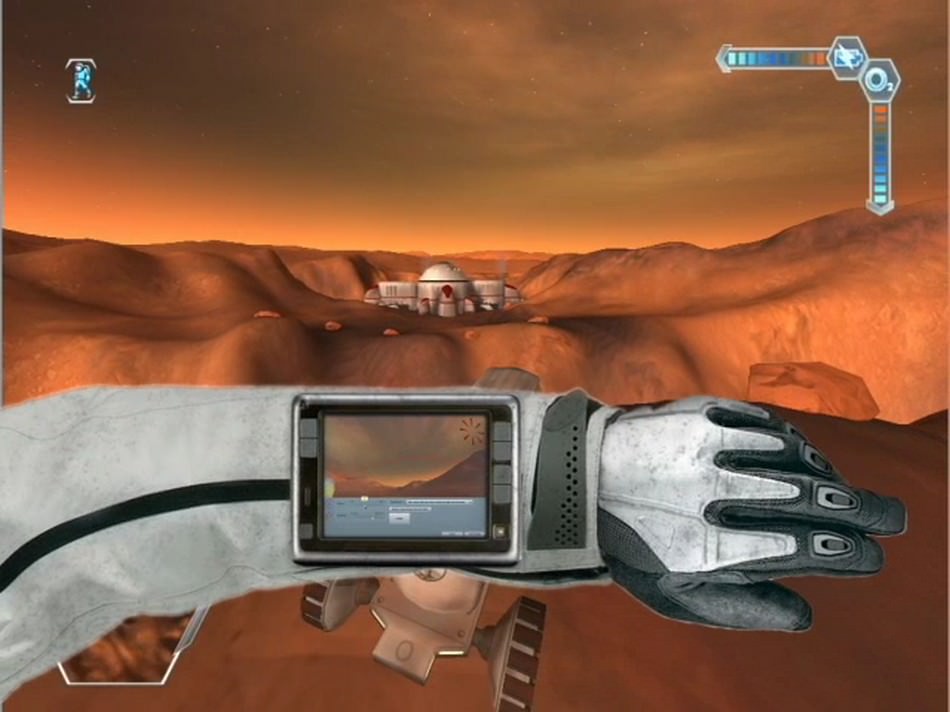
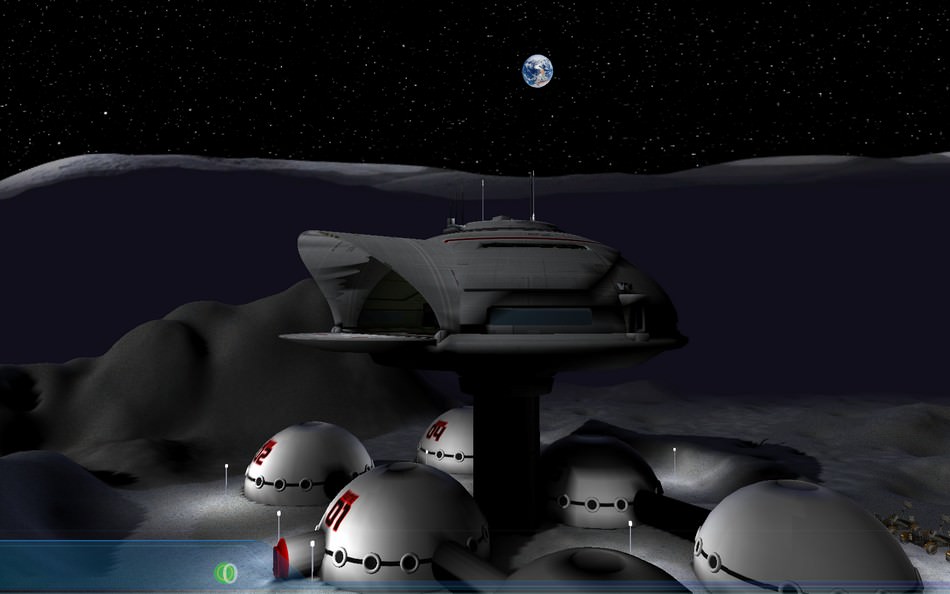
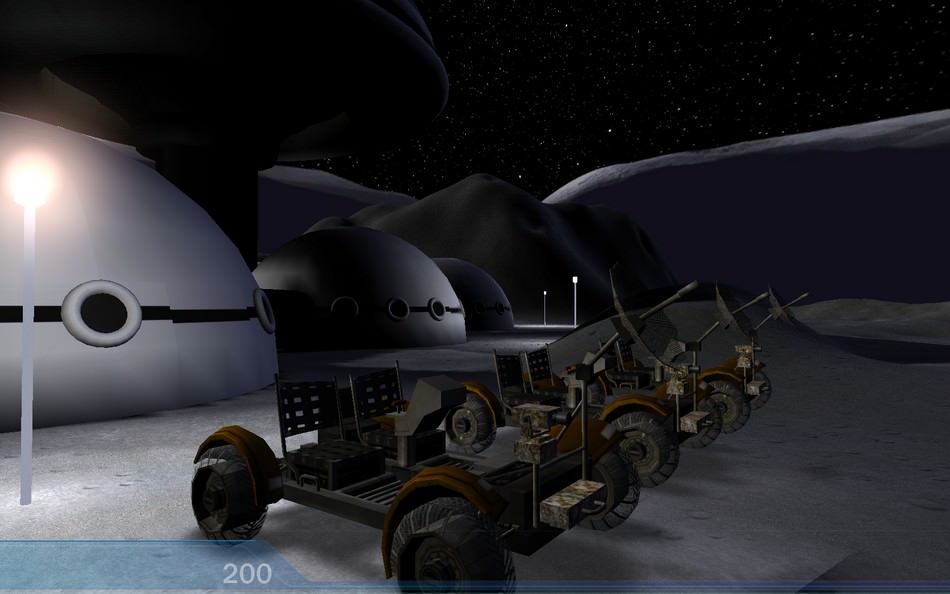
Full story at http://www.universetoday.com/2009/0...tual-universe-astronaut-moon-mars-and-beyond/
The Internet has a growing number of vast space-based MMORPGs, but NASA is hoping to use one of the most advanced gaming engines to develop an engrossing first-person online adventure, where players can choose their own mission to explore space, interact with other players and build settlements on other worlds. All this will take place in a scientifically accurate vision of a near-future Universe in 2035

"Players will pick a profession like a roboticist, space geologist, astrobiologist or mechanical engineer and work together as a team as they explore space and complete missions, establishing bases and outposts and traveling to the farthest reaches of the solar system," explained Jerry Heneghan, founder and CEO of Virtual Heroes


Now NASA is hoping to create a very popular online gaming/educational experience that will not only entertain, but get young people interested in a career in science and engineering. What's more, it is hoped the game will incorporate the Unreal Engine 3 Editor so that players can design their own content, from spaceships and stations to mission profiles. The developers will also include scenarios, such as the threat of near-Earth asteroid impacts and other reality-based events as the online community develops. This will provide a problem-solving/adventure element, while keeping the science grounded in science fact.
Full story at http://www.universetoday.com/2009/0...tual-universe-astronaut-moon-mars-and-beyond/
subzero9285
Banned
Recent running water on Mars
The gully system is located on the inside of a crater in Promethei Terra, an area of cratered highlands in the southern mid-latitudes.

SourceMars appears to have had running water on its surface about one million years ago, according to new evidence. Images from a Nasa spacecraft orbiting the Red Planet show fan-shaped gullies on the surface which seem to be about 1.25 million years old, the study says.
They believe the channels were sculpted by surface water from melting ice. It may represent the most recent period when water flowed on the planet, a team from Brown University in Rhode Island, US, report in the journal Geology.
Gullies on the Red Planet are known to be young features, but scientists have found it difficult to pin down their precise ages.
But Samuel Schon and colleagues from Brown were able to do this using impact craters on a gully system in Promethei Terra, an area of cratered highlands south of the Martian equator. "You never end up with a pond that you can put goldfish in," Mr Schon explained. "But you have transient melt water. You had ice that typically sublimates. But in these instances it melted, transported, and deposited sediment in the fan. It didn't last long, but it happened."
The researchers say the discovery of a gully system, even an isolated one, that supported running water as recently as 1.25 million years ago greatly extends the time that liquid water could have been active on the Red Planet.
It also adds to evidence that Mars experienced a recent ice age in which polar ice is thought to have been transported toward the planet's equator, where it settled in mid-latitude deposits.
From afar, the gully system looks like one entity several hundred metres wide. But detailed study of images from Nasa's Mars Reconaissance Orbiter (MRO) spacecraft shows there were four intervals in which water-borne sediments were carried down the steep slopes of nearby features called alcoves and laid down in a deposit called an alluvial fan.
In order to estimate the age of the system, the scientists used a method of counting craters. Because impacts occur with some regularity, this has become an established way of dating planetary surfaces. More cratered surfaces are deemed older, while smoother surfaces are considered younger.
The researchers accept that because the rate of cratering may shift up and down over time there is a degree of uncertainty in this calculation. But they say this is within acceptable limits.
Mr Schon and his colleagues were able to distinguish four individual "lobe" features which make up the alluvial fan, and determine that each of these lobes must have been deposited in separate events.
One of the lobes was pockmarked with small craters; the scientists identified this as the oldest component of the fan. The other lobes, meanwhile, were unblemished, suggesting they had to be younger.
"We think there was recent water on Mars," said co-author James Head III, a professor of geological sciences at Brown University. "This is a big step in the direction to proving that."
Using a comparison with another cratered surface 80km to the south-west, the team was able to date the oldest lobe of the fan to about 1.25 million years ago.
This established a maximum age for the younger, superimposed lobes. The researchers suggest the formation developed when ice and snow deposits formed in the alcoves during the most recent ice age on Mars. About half a million years ago, ice in the mid-latitudes began to melt or, in most instances, changed directly to vapour - a process called sublimation.
The team considered other options, such as groundwater bubbling up to the surface. But they say the most likely mode of formation for the gullies was the melting of snow and ice deposits that created "modest" flows of water. The finding follows the discovery of water-bearing minerals such as opals and carbonates on Mars.
The gully system is located on the inside of a crater in Promethei Terra, an area of cratered highlands in the southern mid-latitudes.

Tunguska-sized space rock buzzes Earth
http://www.newscientist.com/article/dn16697-tunguskasized-space-rock-buzzes-earth.html
An asteroid about the size of the one that levelled the forest in Tunguska, Siberia, a century ago flew past Earth on Monday - well within the Moon's orbit. The risk of a future impact with the object is not yet known.
A little "late" eh?
http://www.newscientist.com/article/dn16697-tunguskasized-space-rock-buzzes-earth.html
An asteroid about the size of the one that levelled the forest in Tunguska, Siberia, a century ago flew past Earth on Monday - well within the Moon's orbit. The risk of a future impact with the object is not yet known.
A little "late" eh?
DarkJediKnight
Member
Teknoman said:Tunguska-sized space rock buzzes Earth
http://www.newscientist.com/article/dn16697-tunguskasized-space-rock-buzzes-earth.html
An asteroid about the size of the one that levelled the forest in Tunguska, Siberia, a century ago flew past Earth on Monday - well within the Moon's orbit. The risk of a future impact with the object is not yet known.
A little "late" eh?
Why the hell are we hearing about this now?
Also new Saturn moon discovered:
http://news.nationalgeographic.com/news/2009/03/090303-new-moon-saturn.html
Images taken by NASA's Cassini spacecraft over a 600-day stretch revealed the tiny moonlet moving in a partial ring known as a ring arc that extends about a sixth of the way around Saturn's faint G ring.
Moonlet anyway.
http://news.nationalgeographic.com/news/2009/03/090303-new-moon-saturn.html
Images taken by NASA's Cassini spacecraft over a 600-day stretch revealed the tiny moonlet moving in a partial ring known as a ring arc that extends about a sixth of the way around Saturn's faint G ring.
Moonlet anyway.
mr.beers said:Known Universe was on last night on National Geographic Channel new series on the known universe. Gives a comprehensive look on size, speeds and explosions in space with real life comparisons, I really liked it.
A preview of Speed
Does the video load for anyone? I can't get it going at all. The pictures work just fine.
jenov4 said:Does the video load for anyone? I can't get it going at all. The pictures work just fine.
Just had to refresh the site and the video started for me.
EDIT: Every time I watch something like this...my mind is blown.
Jamesfrom818
Banned
Not sure if it really fits here but I didn't want to start a new thread. I was watching the History Channel yesterday and they had a show on parallel universes. I couldn't help but get pissed off because I"m not the version of me that won the lottery and shit. I guess I could be worse off though. I could be getting my ass reamed in prison.
AndersTheSwede
Member
Jamesfrom818 said:Not sure if it really fits here but I didn't want to start a new thread. I was watching the History Channel yesterday and they had a show on parallel universes. I couldn't help but get pissed off because I"m not the version of me that won the lottery and shit. I guess I could be worse off though. I could be getting my ass reamed in prison.
The History channel has always amused me that it can schedule such bullshit like "SIGNS OF THE APOCALYPSE!" and other crazy religious crackpot shit. Right next to the surprisingly excellent "The Universe."
A very strange channel.
AndersTheSwede said:The History channel has always amused me that it can schedule such bullshit like "SIGNS OF THE APOCALYPSE!" and other crazy religious crackpot shit. Right next to the surprisingly excellent "The Universe."
A very strange channel.
Hey, people like to be wowed and scared.
Jamesfrom818 said:Not sure if it really fits here but I didn't want to start a new thread. I was watching the History Channel yesterday and they had a show on parallel universes. I couldn't help but get pissed off because I"m not the version of me that won the lottery and shit. I guess I could be worse off though. I could be getting my ass reamed in prison.
There was some article today about how dark matter could actually be normal matter that was part of an parallel universe.
A bizarre universe may be lurking in the shadows
abstract alien
Member
Damn, Im still in love with this thread.
AndersTheSwede said:The History channel has always amused me that it can schedule such bullshit like "SIGNS OF THE APOCALYPSE!" and other crazy religious crackpot shit. Right next to the surprisingly excellent "The Universe."
A very strange channel.
and
Axman
Ice Road Truckers
wtf
i wish they'd show more reruns of The Universe
I only caught the end of the parallel universe episode. But the one on sex in space was pretty amusing :lol
Heads up: Kepler (the telescope for hunting for earth-sized planets) is launching today. Or should be, all going well.
http://edition.cnn.com/2009/TECH/space/03/06/nasa.kepler.mission/index.html
Fingers crossed!
http://edition.cnn.com/2009/TECH/space/03/06/nasa.kepler.mission/index.html
- The U.S. space agency NASA will launch its first ever mission Friday to find Earth-like planets in our region of the Milky Way.
Scientists will be holding their breath as the Kepler spacecraft -- mounted with the biggest telescope ever to be launched into space -- lifts off from the Cape Canaveral Air Force Station in Florida.
"Everything about the mission is optimized to find Earth-size planets with the potential for life, to help us answer the question -- are Earths bountiful or is our planet unique?," said the man leading the mission, Bill Borucki, science principal investigator for the mission at NASA's Ames Research Center.
The Kepler spacecraft has just two three-minute windows of opportunity to blast off on Friday, from 10.49pm to 10.52pm EST, or slightly later at 11.13 to 11.16pm EST.
If the launch goes to plan, Kepler will spend the next three and a half years monitoring more than 100,000 stars in a single patch of star-rich sky in "our region of the Milky Way galaxy," near the Cygnus and Lyra constellations.
Fingers crossed!
Old but in-depth Kepler article. It will watch stars and try to detect planets moving in front of them.
Not as sexy as the Terrestrial Planet Finder Inteferometer but I'll take it.
Also sexy: the New Worlds Atlas.
The idea is to observe a large number of stars for several orbital periods, looking for periodic dimming of the stars corresponding to transit events in which the planet crosses its star's disk, blocking a fraction of the starlight. Central transits last from a few hours for orbital periods of several days, to 13 hours for an earth-like orbit, and 16 hours for a Mars-like orbit. The photometric signal from a terrestrial planet is small, basically the ratio of the area of the planet to the area of the star.
Not as sexy as the Terrestrial Planet Finder Inteferometer but I'll take it.
Also sexy: the New Worlds Atlas.
subzero9285
Banned
Dancing black holes discovered
Artist's illustration

SourceResearchers have seen the best evidence yet for a pair of black holes orbiting each other within the same galaxy.
While such "binary systems" have been postulated before, none has ever been conclusively shown to exist.
The new black hole pair is dancing significantly closer than the prior best binary system candidate.
The work, published in the journal Nature, is in line with the theory of the growth of galaxies, each with a black hole at their centre.
The theory has it that as galaxies near one another, their central black holes should orbit each other until merging together.
But evidence for black holes nearing and orbiting has so far been scant.
Dancing cheek-to-cheek
As matter falls into black holes, it emits light of a characteristic colour that in turn gives information about the direction in which the black hole is moving.
In a binary system, two beams should be emitted, each a slightly different colour.
Todd Boroson and Tod Lauer of the US National Optical Astronomy Observatory analysed some 17,500 spectra from the Sloan Digital Sky Survey, and have now found just such a pair of emissions coming from a distant quasar.
The researchers estimate that the two light sources come from black holes between 20 million and one billion times more massive than our Sun.
The black holes are separated by an estimated distance of less than a third of a light-year - cheek-to-cheek by black hole standards and significantly closer than the postulated binary system spotted by the Chandra X-ray Observatory in 2003.
The pair are estimated to dance around one another every 100 years.
Because they are moving with respect to the Earth as well as to each other, observations of their movement over the next few years should prove beyond question that they are indeed the first partnered pair of black holes.
"Previous work has identified potential examples of black holes on their way to merging, but the case presented by Boroson and Lauer is special because the pairing is tighter and the evidence much stronger," said Jon Miller, an astronomer at the University of Michigan.
Artist's illustration

1 Hour!
Launch blog: http://www.nasa.gov/mission_pages/kepler/launch/launch_blog.html
Launch blog: http://www.nasa.gov/mission_pages/kepler/launch/launch_blog.html
One Hour to Launch
Fri, 06 Mar 2009 09:49:58 PM EST
The launch team is working no technical issues as the countdown proceeds smoothly toward a liftoff at 10:49 p.m. for the Kepler mission. We have less than 60 minutes to go before the Delta II is ignited and Kepler heads for space.
Kepler liftoff.
Second Stage Ignites
Fri, 06 Mar 2009 10:55:22 PM EST
The second stage is burning as planned. Launch controllers report no problems.
Memphis Reigns
Member
Fuck yes. Just last night I was watching the show Second Earth and they had a section on the Kepler and all they said was it was scheduled to launch in 2009...did not know it'd be the very next day. Bring on a second Earth.
(I hope this thing works)
(I hope this thing works)
Memphis Reigns said:Fuck yes. Just last night I was watching the show Second Earth and they had a section on the Kepler and all they said was it was scheduled to launch in 2009...did not know it'd be the very next day. Bring on a second Earth.
(I hope this thing works)
Didnt they already discover one other planet that was in the habitable zone around a star? Glise something?
Memphis Reigns
Member
Teknoman said:Didnt they already discover one other planet that was in the habitable zone around a star? Glise something?
Yes, two actually. Both lay on the outer edges of the habitable zone. But we can't see it that well. So its speculation. This thing is supposed to make it quite obvious which planets are habitable and which aren't.
DarkJediKnight
Member
Wanted to watch the Kepler liftoff but was stuck at work. I hope we get some awesome pics and info coming out of it.
Phoenix Mars Lander Found Liquid Water, Some Scientists Think
During its more than five-month stint on Mars last year, NASA's Phoenix Mars Lander found evidence that liquid water existed at the spacecraft's landing site, some Phoenix team members say.
Water is key to all forms of life as we know it and the discovery of liquid water would suggest a greater opportunity for biology on the red planet.
The new but controversial conclusion comes from observations of a set of "little globules" attached to struts on the lander's legs that were photographed by Phoenix's robotic arm camera over the course of the mission, as first reported at Spaceflight Now.
These globs were seen to apparently move and grow between snapshots, and 22 members of the Phoenix team, including principal investigator Peter Smith of the University of Arizona in Tucson, think that this behavior combined with other Phoenix findings indicates that these blobs might have been liquid water that was splashed up onto the spacecraft as it landed.
The paper making the case for liquid water will be presented on March 23 at the Lunar and Planetary Science Conference in Houston. But not all of Phoenix's team members agree with the paper's interpretation of the globs.
that image is a bit deceptive. the junk you see in that image wouldn't even be visible with the human eye from that distance and scale.Teknoman said:
Man...
humans are fucking awesome.Tom_Cody said:I just watched Star Trek: TMP which lead me to research the Voyager program. I came across this image of the famous Golden Record and I thought it would be a good fit in this thread. Also, I had never known that Carl Sagan was in charge of producing the disks.

Source
http://climate.jpl.nasa.gov/
Speaking of space junk:
http://www.physorg.com/news156083582.html
PhysOrg said:Visitors to "Eyes on the Earth 3-D" can: - Ride along with a spacecraft, observing Earth as it sweeps below in accelerated time. - View authentic data maps of ozone, sea level or carbon dioxide distribution, mapped onto the surface of the globe. - Compare the size of each satellite to a car or a scientist. - Blast through a global carbon dioxide map to uncover some of the world's most populous cities in the new interactive game, "Metropolis."
"This innovative new Web application gives the public an unprecedented perspective on our changing planet, as only NASA can," said Michael Greene, manager for public engagement strategy at NASA's Jet Propulsion Laboratory, Pasadena, Calif.
Speaking of space junk:
http://www.physorg.com/news156083582.html
PhysOrg said:The near-hit of space junk Thursday was a warning shot fired across the bow of the international space station, experts said. There's likely more to come in the future. With less than an hour's notice, the three astronauts were told they'd have to seek shelter in a Russian capsule parked at the space station in case a speeding piece of space junk hit Thursday.
PhysOrg said:If it hit and they were in the main part of the station, they'd have only 10 minutes of safety, Mission Control told them. A hole in the space station could mean loss of air, loss of pressure and eventual loss of life.
The crew moved so fast that they may have left their instruction manual on the other side of a closed hatch. Inside the Soyuz, they waited for 10 minutes, ready to flee to Earth if the worst happened. On the ground, space debris experts fretted.
"It's yet another warning shot that we really have to do something about space debris now. We have to do something on an international level," said Harvard astrophysicist Jonathan McDowell, who tracks everything in orbit.
The U.S. Space Command tracks 13,943 orbiting objects 4 inches or larger. Only about 900 of those are working satellites, McDowell said. The rest is litter. There are thousands more smaller pieces of junk that can't be tracked as easily.
It was traveling 5.5 miles per second - about 20,000 mph, according to NASA spokesman Josh Byerly.
At that speed, something 5 inches "will wreck your whole day," Matney said.
The trash is even worse in the orbit of the Hubble Space Telescope. The February satellite crash increased the risk of junk hitting the space shuttle when it repairs Hubble. NASA is still calculating whether it's safe enough to do the repairs later this year.
AndersTheSwede
Member
kkaabboomm
Member
this thread's name is Space: The Final Frontier
i think we have a new winner.

http://abcnews.go.com/Technology/story?id=7107251
i hope that bat hung on for as long as possible and enjoyed the view, even though i know he probably either fell off or was knocked out by the speed/thinning atmosphere/etc
i think we have a new winner.

http://abcnews.go.com/Technology/story?id=7107251
Did Bat Hitch a Ride to Space?
Flying Rodent Was Seen Clinging to Discovery's Fuel Tank During Liftoff
The bat, seen clinging to the external fuel tank of the Space Shuttle Discovery before its launch on Sunday, apparently clung for dear life to the side of the tank as the spaceship lifted off.
And what a ride.
The shuttle accelerates to an orbital velocity of 17,500 milers per hour, which is 25 times faster than the speed of sound, in just over eight minutes. That's zero to 100 mph in 10 seconds.
Did it make it into space? No one knows yet. But photos of Discovery as it cleared the launch tower showed a tiny speck on the side of the tank. When those photos were blown up, it became apparent that the speck was a bat.
Flight director Paul Dye said no one has seen the bat since.
"I heard that it was clinging to the tank at liftoff, but I don't think anyone has seen it since," he said.
Launch controllers spotted the bat after it had clawed onto the foam of the external tank as Discovery stood at Cape Canaveral's Launch Pad 39A.
The temperature never dropped below 60 degrees at that part of the tank, and infrared cameras showed that the bat was 70 degrees through the launch.
The final inspection team that surveys the outside of the shuttle and tank for signs of ice buildup hoped the bat would wake up and fly away before the shuttle engines ignited.
The bat is the one goofy moment in a mission that has been flawless so far -- at least after a few gliches forced the launch to be postponed.
STS 119 was delayed repeatedly while engineers struggled with hydrogen fuel control valves, and later, a hydrogen fuel leak, but the launch Sunday was flawless and the mission so far is going as planned.
Discovery docked to the International Space Station and later this week will install the final truss and solar arrays to give the orbiting lab more power, which will allow the crew to expand from three to six.
i hope that bat hung on for as long as possible and enjoyed the view, even though i know he probably either fell off or was knocked out by the speed/thinning atmosphere/etc
afternoon delight
Member
Just want to say, watched "The Universe" and loved the supermassive blackholes. Watching some cosmonaut footage helped.
kkaabboomm
Member
update on the bat:
apparently he was not frozen on, he was holding on because his wing was broken. it is confirmed he made it up past the launch tower, after that no one knows if he stayed for the entire trip.
http://science.slashdot.org/article.pl?sid=09/03/18/1232233
a commenter on /. says that based on fluid dynamics, windspeed at his location was approaching 0, so i dont know if thats true or not, but if it is, thats a plus for him.
a minus for him would be this:
if he did drop off, he would not have made it.
more:
http://www.astroengine.com/?p=4218
His name was Brian, and he was a free-tailed bat.

apparently he was not frozen on, he was holding on because his wing was broken. it is confirmed he made it up past the launch tower, after that no one knows if he stayed for the entire trip.
http://science.slashdot.org/article.pl?sid=09/03/18/1232233
a commenter on /. says that based on fluid dynamics, windspeed at his location was approaching 0, so i dont know if thats true or not, but if it is, thats a plus for him.
a minus for him would be this:
http://www.universetoday.com/2009/03/17/the-discovery-bats-fate-is-confirmed/it is likely the bat dropped off and died in the searing 1400°C exhaust of the throttling boosters.
if he did drop off, he would not have made it.
more:
http://www.astroengine.com/?p=4218
His name was Brian, and he was a free-tailed bat.

Jamesfrom818
Banned
afternoon delight said:Just want to say, watched "The Universe" and loved the supermassive blackholes. Watching some cosmonaut footage helped.
After watching "The Universe" so many times, I think I've developed a massive crush on Dr. Amy Mainzer.
afternoon delight said:Just want to say, watched "The Universe" and loved the supermassive blackholes. Watching some cosmonaut footage helped.
To think every galaxy has one at the center of them. Between blackholes, gamma rays, and death stars one has plenty to be amazed by.
Lost Fragment
Obsessed with 4chan
Wow. Neat stuff.Lost Fragment said:
Memphis Reigns
Member
Lost Fragment said:
F they took it down.
Lost Fragment
Obsessed with 4chan
The Librarian
Banned
What is that?
And poor bat.
And poor bat.


